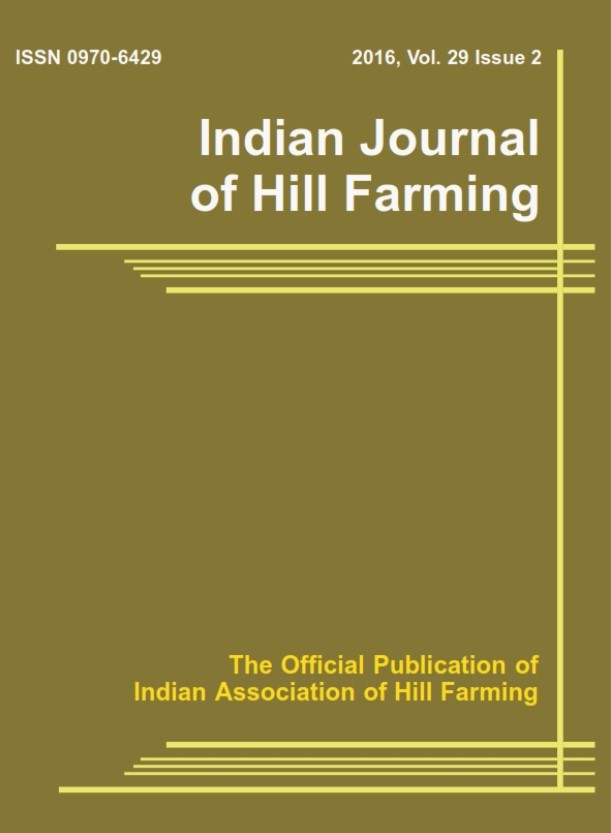Assessment of Yield and Monitory Gaps Through Front Line Demonstrations Program on Brown Sarson (Brassica rapa L.) in the Hilly Areas of Jammu & Kashmir
DOI:
https://doi.org/10.56678/iahf-2024.37.02.3Keywords:
Brown sarsoon,, yield, Demonstrations,, economics, hilly areasAbstract
Demand for edible oil in India has increased substantially and the country imports vegetable oil to meet the deficit. With an effective technology dissemination system, there is ample scope to bridge the production and demand gap. With the objective of demonstrating of potential of oilseed production in the hills of Jammu & Kashmir, frontline demonstrations on improved technologies related to brown sarson were conducted at 15 locations in the years 2020-21 and 2021-22. The results revealed a significant improvement in yield with improved practice (IP) over farmer’s practice (FP). IP recorded an average yield of 14.5 q ha-1 compared to 10.5 q ha-1 obtained under FP. The yield superiority of IP was 38% over FP. Extension gap, technology gap, and technology index were 4, 2.4, and 14.4 q ha-1, respectively. Net returns were ₹53235 ha-1 in improved practice and ₹30299 ha-1 in farmer’s practice. Input costs and net returns were ₹1046 ha-1 and ₹22936 ha-1 higher in IP over FP. B:C ratio was 1.6 and 0.9 for IP and FP, respectively. The follow-up survey indicated that late sowing of the crop (36%)followed by lack of awareness (20%) are major reasons for the yield gap between potential and yield released at the farmer’s field.
Downloads
Published
Issue
Section
License
Copyright (c) 2025 T Mubark, Abdul Shakoor, Haseeb-ur- Rehman, Intikhab Aalam Jhangeer, Sujeela Gulzar (Author)

This work is licensed under a Creative Commons Attribution-NonCommercial-NoDerivatives 4.0 International License.




